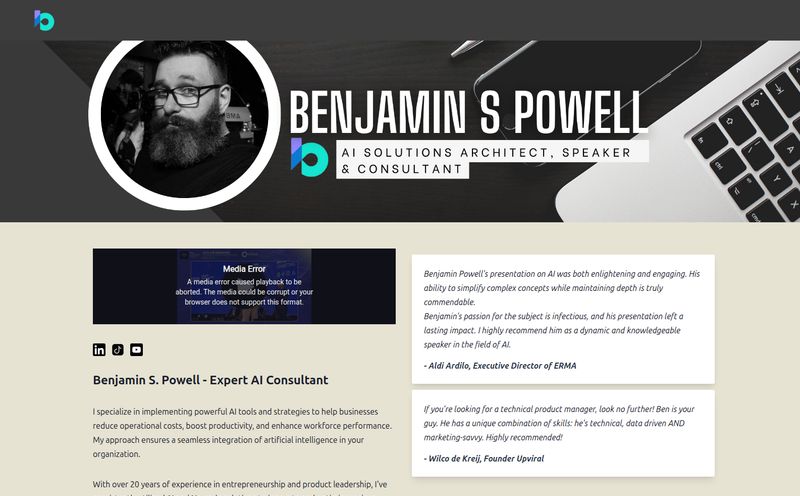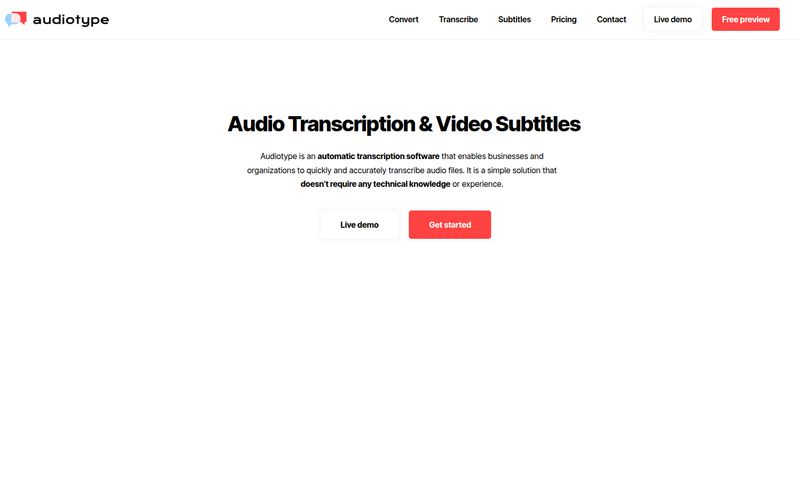If you’re a parent, guardian, or educator of a neurodivergent child, you know the feeling. It’s that mix of fierce love and a quiet, gnawing frustration. You see the brilliance, the creativity, the unique way their mind works, but you watch them struggle against a one-size-fits-all education system. It’s a system that, frankly, wasn’t built for them.
As someone who’s spent years swimming in the seas of SEO and digital trends, I see a new app promising to 'revolutionize' something every other day. Most of it is just noise. But every now and then, something cuts through. Something that feels less like a cash grab and more like a mission. That’s the vibe I got when I first stumbled upon AIDA, which stands for AI Diagnostic & Learning Companion. It’s a bold name, and an even bolder promise: a personalized journey for every neurodivergent mind.
So, is it just more marketing fluff, or is there something genuinely special here? I decided to put on my professional hat, push past the shiny landing page, and see what’s really going on.
What Exactly Is AIDA? (And Why It's Not Just Another App)
At its heart, AIDA isn’t just an app; it’s positioned as a partner in a child's learning journey. Think of it less like a piece of software and more like a digital co-pilot, specifically trained to navigate the unique wiring of a neurodivergent brain. The platform is built on a simple but powerful three-step loop: Diagnose, Personalize, and Grow.
It’s designed to help children with learning challenges like dyslexia, dyscalculia, and dysgraphia. Instead of just throwing generic exercises at a child, AIDA’s first step is to understand how that specific child thinks and learns. It uses AI to conduct what it calls a “diagnosis with context.” This isn't about slapping on a label; it’s about creating a detailed map of the child's individual strengths and hurdles.

Visit DAWN AI
Once it has that map, it builds a personalized learning path. This is the magic ingredient for me. We've been talking about 'personalized learning' in EdTech for over a decade, but it's often just meant letting a student pick their avatar. This seems to go deeper. It's about adapting the actual curriculum, the pace, and the style of teaching to the individual. It's what every great teacher wishes they had the time to do for every single student.
A Look Under the Hood at AIDA's Core Features
So how does it actually do all this? The website gives us a peek into its main components, and it’s a pretty compelling setup.
More Than a Quiz, It's an AI-Powered Diagnosis
This is the starting block. AIDA's AI assessment moves beyond simple right-or-wrong answers. It looks at patterns, response times, and the types of mistakes being made to get a richer picture of the learning challenge. For a parent who has been told “your child just needs to try harder,” this data-driven insight can be a massive relief. It’s validation. It’s a concrete starting point.
Building a Truly Personalized Learning Path
After the diagnosis, the platform's “Mind Map Builder” gets to work. This feature creates a visual, adaptive curriculum. It’s not a linear, chapter-by-chapter slog. It’s a dynamic map that can change based on the child's progress. If they master a concept quickly, it moves on. If they stumble, it can offer different approaches or foundational exercises. The Learner Dashboard lets the child see their own progress, which can be a huge confidence booster.
Making Learning Fun and Inclusive
Let's face it, if it's not engaging, kids won't use it. AIDA seems to get this. They've baked in gamification, rewards, and a sense of positive reinforcement. On their site, they showcase “Current Top Stars,” celebrating kids' achievements publicly (with permission, I assume). This isn't just about points; it’s about creating a space where learning isn't intimidating. It’s a place to succeed. As one parent, Bilkisu, said on their site, “It has been an amazing learning journey with my son on AIDA, it is child friendly and engaging.” When a parent says that, you listen.
The Tech Powering the Platform: A Quick Peek at DAWN
Here’s where things get interesting for a tech nerd like me. The AIDA site mentions it’s “Powered by DAWN.” A little digging reveals that DAWN AI is the parent technology, the engine under the hood. The provided info describes DAWN as an EdTech platform using AI and blockchain to create accessible learning ecosystems.
Now, I get a little twitchy when I hear “blockchain.” It’s a word that has been slapped onto everything in the last few years, often without a good reason. However, in the context of educational records, it could make sense for creating secure, verifiable, and portable learning credentials. Is that how they're using it? The details are a bit sparse, which is a question mark for me. But the broader vision of DAWN—using AI for things like transcribing courses into local languages and even offering AI recruitment services—shows a huge ambition that goes beyond just one app. AIDA is clearly their flagship product, the first expression of this bigger mission.
Who Is This Really For? The Parent and Learner Experience
A tool can have all the fanciest tech in the world, but it’s useless if it doesn’t work for the people using it. AIDA seems to have thought this through by creating distinct experiences for the parent and the child.
The Parent Dashboard: Your Mission Control
For parents, the Parent Dashboard looks like a godsend. It offers a way to see real, tangible progress without having to hover over your child’s shoulder. You can see the data, understand the strategy, and feel like an informed partner in their education rather than a helpless bystander. This shift from anxiety to empowerment is, I think, one of AIDA’s most valuable, if unstated, features.
The Learner's World: More Play, Less Pressure
For the child, the experience is all about engagement. The gamified interface, the rewards, teh focus on celebrating small wins—it’s all designed to rebuild confidence that may have been chipped away in a traditional classroom. One testimonial from a student named Al-amin simply says, “Because of AIDA, I now know I can do it.” Honestly, what more could you want?
The Big Question: What Does AIDA Cost?
This is often the bottom line for families. As of right now, AIDA has not listed any public pricing on their website. This is fairly typical for a platform that might still be in a growth or pilot phase. They could be working directly with schools, offering beta access, or tailoring packages for individual needs. The lack of a clear pricing page means you can't just sign up with a credit card. My advice? If you're intrigued, use their “Get in Touch” or “Book a Call” options. It's the most direct way to find out what the investment looks like for your family.
My Honest Take: The Pros and The Question Marks
Alright, let’s put it all on the table. I'm genuinely excited by what AIDA represents. The focus on neurodiversity isn't a feature; it's the entire foundation. In an industry that often pays lip service to inclusivity, that’s refreshing. The platform looks polished, the testimonials feel real, and the social proof of over 10,000 learners served is nothing to sneeze at. The team, backed by accelerators like Bluerock, seems credible and driven.
But I still have my questions. The DAWN platform that powers it is described as being in a “waitlist phase” in some of the data I found, which feels a little at odds with AIDA seemingly being live and active. And I’m still a skeptic on the blockchain front—I’d love to see a clear whitepaper or blog post explaining the tangible benefit for a 10-year-old with dyslexia. These aren't deal-breakers, but they are points of curiosity that I hope they'll clarify as they grow.
Some might argue that relying so heavily on AI takes the human element out of teaching. But I see it differently. In my experience, tools like this don't replace teachers or parents; they empower them. They handle the heavy lifting of data analysis and curriculum adaptation, freeing up the humans to do what they do best: provide encouragement, emotional support, and real-world context.
Frequently Asked Questions about AIDA
- What specific learning challenges does AIDA address?
- AIDA is primarily designed for neurodivergent children, focusing specifically on learning challenges such as dyslexia (difficulty with reading), dyscalculia (difficulty with math), and dysgraphia (difficulty with writing).
- Is AIDA suitable for all ages?
- The platform appears to be geared towards school-aged children. The visual design and gamified elements suggest a focus on elementary and middle school students, but you should contact them directly for specific age-range recommendations.
- How does the AI diagnosis actually work?
- Instead of a standard test, AIDA's AI uses a series of interactive assessments. It analyzes not just the answers but the patterns and behaviors behind them to create a detailed cognitive profile, identifying specific areas of strength and challenge without the pressure of a formal test environment.
- Is AIDA available worldwide?
- The testimonials section on their website is titled "From Around the Continent," which suggests a primary focus on Africa. However, as a digital platform, it's likely accessible from anywhere with an internet connection. It’s best to inquire about service availability in your specific region.
- What is the relationship between AIDA and DAWN?
- Think of DAWN AI as the engine and AIDA as the car. DAWN is the underlying technology platform, incorporating AI and other systems. AIDA is the user-facing product—the specific application for neurodivergent learning that is built on and powered by DAWN's technology.
Final Thoughts on AIDA
So, where do we land? AIDA is an incredibly promising, compassionate, and intelligently designed tool in a field that is starving for genuine innovation. It’s not just another learning game. It’s a comprehensive system that respects the individuality of every child and gives parents a sense of hope and control.
While I'll be keeping an eye out for more clarity on pricing and the finer points of their tech stack, I can't help but be impressed. This feels different. It feels like a platform built by people who have a personal connection to the problem they're solving. And in the world of tech, that’s usually where the real magic happens. I'll be watching this one closely; it might just be the start of a much-needed new chapter in education.
References and Sources
- AIDA Official Website
- Understood.org - For information on learning and thinking differences.



